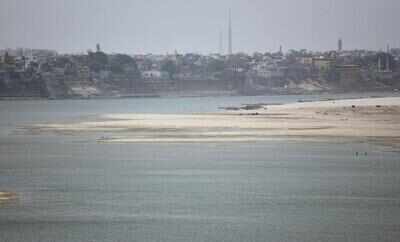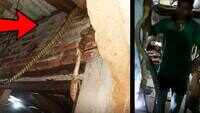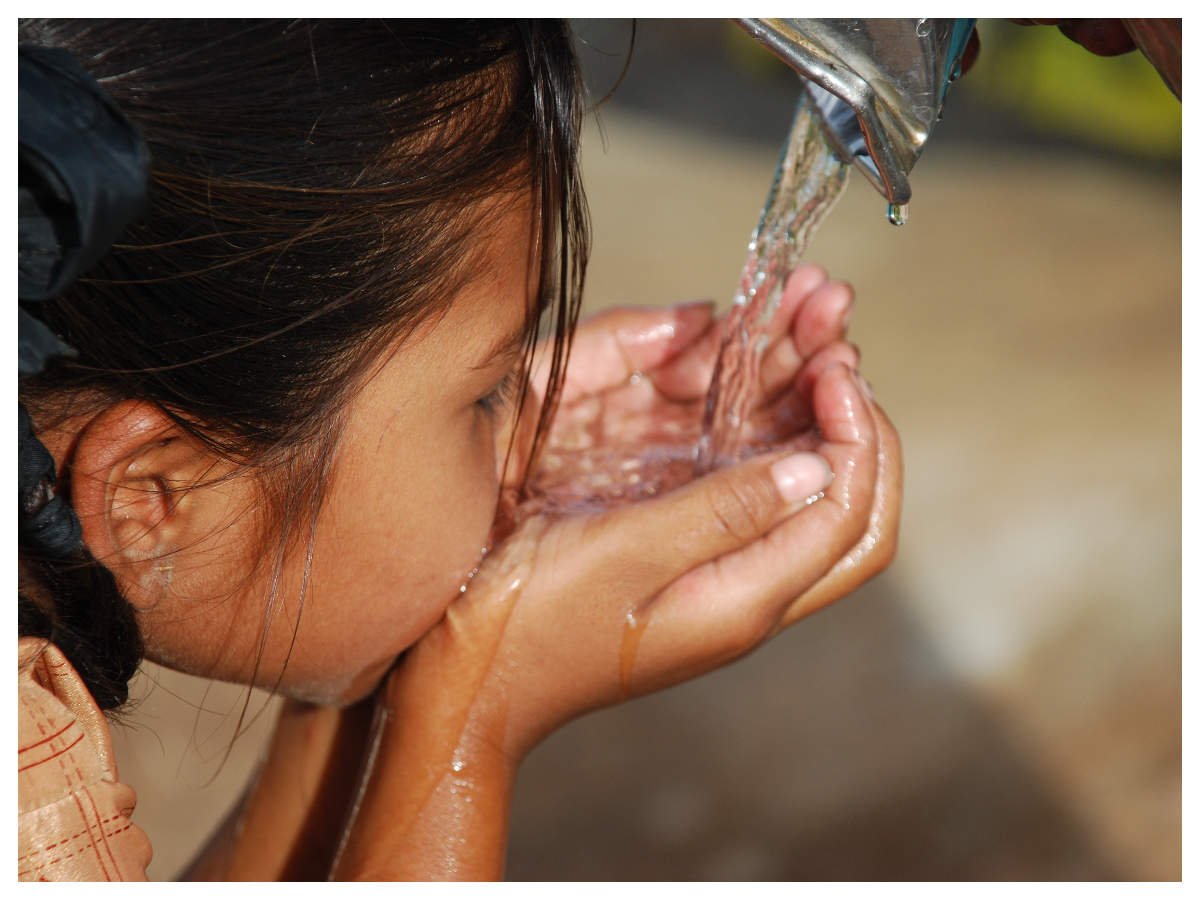
Varanasi: As the World Environment Day (June 5) was observed symbolically on Friday due to the outbreak of Covid-19, a noted river engineer and retired professor of IIT-BHU Prof UK Choudhary said that the nature-gifted technology is the best to conserve and protect the environment.
Giving an example of sand-bed site at Prayagraj, he said that it works as a purifier/sanitizer for millions of people during Kumbh-Mela. “This sand-bed site at Prayagraj works as sanitizer for 30-40 million people visiting the Kumbh mela. The research thesis report states the BOD (Biochemical Oxygen Demand) of the pollutant from STP reduces to zero when it is passed through the model of the sand-bed kept in the sun. Thus the utilization of sand-bed technology for sanitization of millions of people in the Kumbh mela proves that this technology is a suitable methodology for conserving the bacteriophage of the Ganga water, and sand bed of all river systems of the world can work as the sanitizer/purifier”, said Choudhary.
According to Prof Choudhary, the convex bank side sand bed of the Ganga river system is the best energy-site for the conservation of the medicinal potencies of the Ganga water from polluting sources. For this work, one acre area of sand-bed is equal to more than 2,000 times land area of the city site. This sand-bed exists in hundreds and thousands acre of area in three sites of the river – the upstream, downstream and in front of the cities/towns/villages. The level difference between the city and the sand-bed sites is between 8 to 10 meters, where under the gravity forces pollutants from STP can be supplied. All pollutant rushing to the river must pass through the sand bed site at proper location and with proper technology.
Choudhary said that the pollutant generated through domestic, industry, agriculture treated or untreated have their directions of flow towards the river, therefore the outfall sites must be selected on the basis of the energy available for pollutants diffusion, dispersion and dilution in the stream.
According to him, river morphology is subjected to sedimentation (on convex side) & erosion (on concave side). The relationship between sedimentation and erosion and shifting course of river needs to be solved on priority basis, and streamlining of the system is required for ecological balance. “It is unfortunate that the potential of sand bed to control pollution has not been evaluated, and the hydraulic gradient between riverbanks is nowhere utilised for pollution management,” he lamented.
Giving an example of sand-bed site at Prayagraj, he said that it works as a purifier/sanitizer for millions of people during Kumbh-Mela. “This sand-bed site at Prayagraj works as sanitizer for 30-40 million people visiting the Kumbh mela. The research thesis report states the BOD (Biochemical Oxygen Demand) of the pollutant from STP reduces to zero when it is passed through the model of the sand-bed kept in the sun. Thus the utilization of sand-bed technology for sanitization of millions of people in the Kumbh mela proves that this technology is a suitable methodology for conserving the bacteriophage of the Ganga water, and sand bed of all river systems of the world can work as the sanitizer/purifier”, said Choudhary.
According to Prof Choudhary, the convex bank side sand bed of the Ganga river system is the best energy-site for the conservation of the medicinal potencies of the Ganga water from polluting sources. For this work, one acre area of sand-bed is equal to more than 2,000 times land area of the city site. This sand-bed exists in hundreds and thousands acre of area in three sites of the river – the upstream, downstream and in front of the cities/towns/villages. The level difference between the city and the sand-bed sites is between 8 to 10 meters, where under the gravity forces pollutants from STP can be supplied. All pollutant rushing to the river must pass through the sand bed site at proper location and with proper technology.
Choudhary said that the pollutant generated through domestic, industry, agriculture treated or untreated have their directions of flow towards the river, therefore the outfall sites must be selected on the basis of the energy available for pollutants diffusion, dispersion and dilution in the stream.
According to him, river morphology is subjected to sedimentation (on convex side) & erosion (on concave side). The relationship between sedimentation and erosion and shifting course of river needs to be solved on priority basis, and streamlining of the system is required for ecological balance. “It is unfortunate that the potential of sand bed to control pollution has not been evaluated, and the hydraulic gradient between riverbanks is nowhere utilised for pollution management,” he lamented.

Coronavirus outbreak
Trending Topics
LATEST VIDEOS
City
 BJP leader Sonali Phogat slaps market committee secretary in Haryana’s Hisar, video goes viral
BJP leader Sonali Phogat slaps market committee secretary in Haryana’s Hisar, video goes viral  King cobra found at a house in Odisha, later rescued
King cobra found at a house in Odisha, later rescued  Deva Snana Purnima: Lord Jagannath and divine siblings bathed, dressed in elephant costumes in Odisha's Rourkela
Deva Snana Purnima: Lord Jagannath and divine siblings bathed, dressed in elephant costumes in Odisha's Rourkela  1,100 villages of Haryana to get 1.15 crore fruit-bearing, shady trees, says Haryana minister
1,100 villages of Haryana to get 1.15 crore fruit-bearing, shady trees, says Haryana minister
More from TOI
Navbharat Times
Featured Today in Travel
Quick Links
Kerala Coronavirus Helpline NumberHaryana Coronavirus Helpline NumberUP Coronavirus Helpline NumberBareilly NewsBhopal NewsCoronavirus in DelhiCoronavirus in HyderabadCoronavirus in IndiaCoronavirus symptomsCoronavirusRajasthan Coronavirus Helpline NumberAditya ThackerayShiv SenaFire in MumbaiAP Coronavirus Helpline NumberArvind KejriwalJammu Kashmir Coronavirus Helpline NumberSrinagar encounter
Get the app



